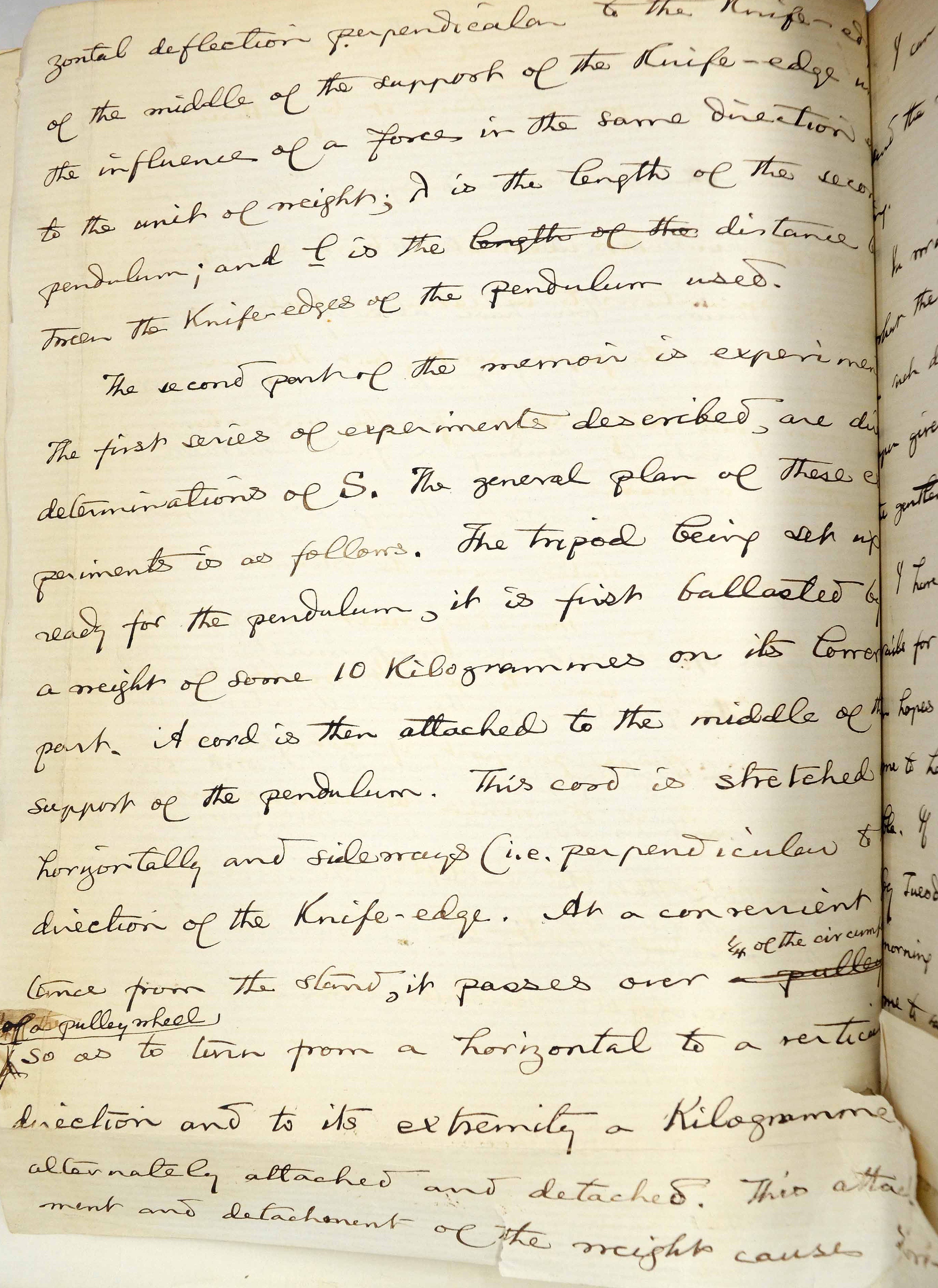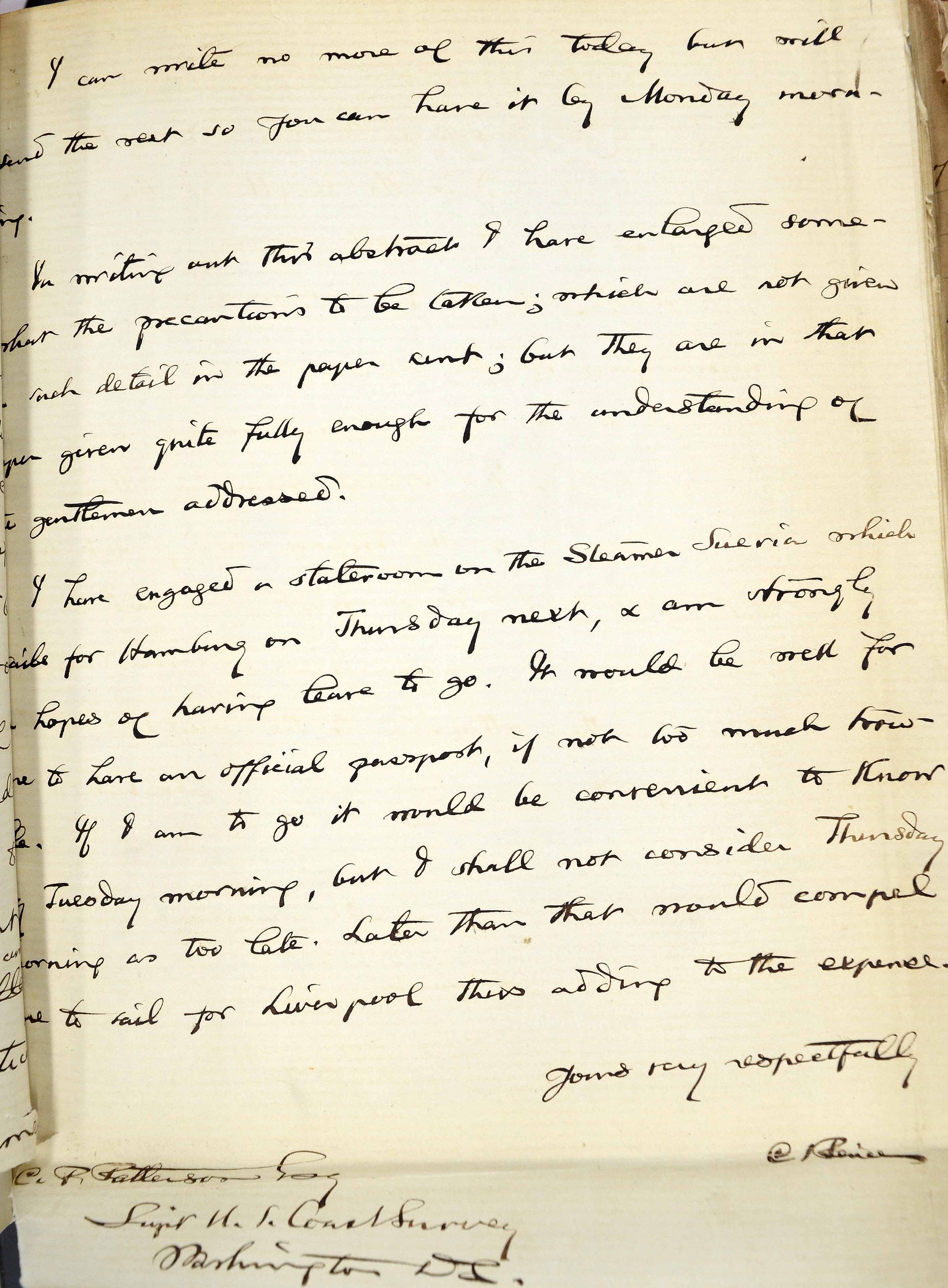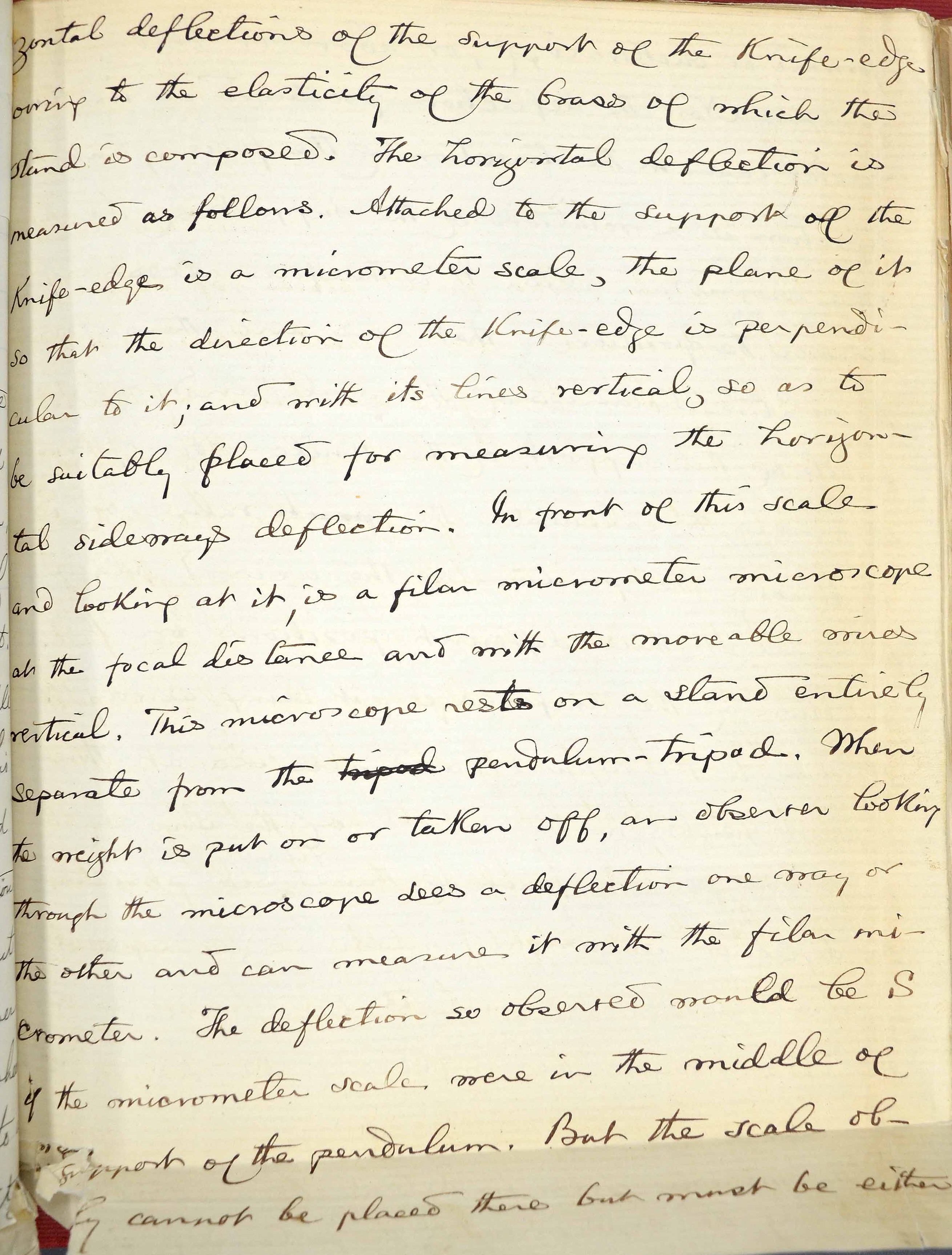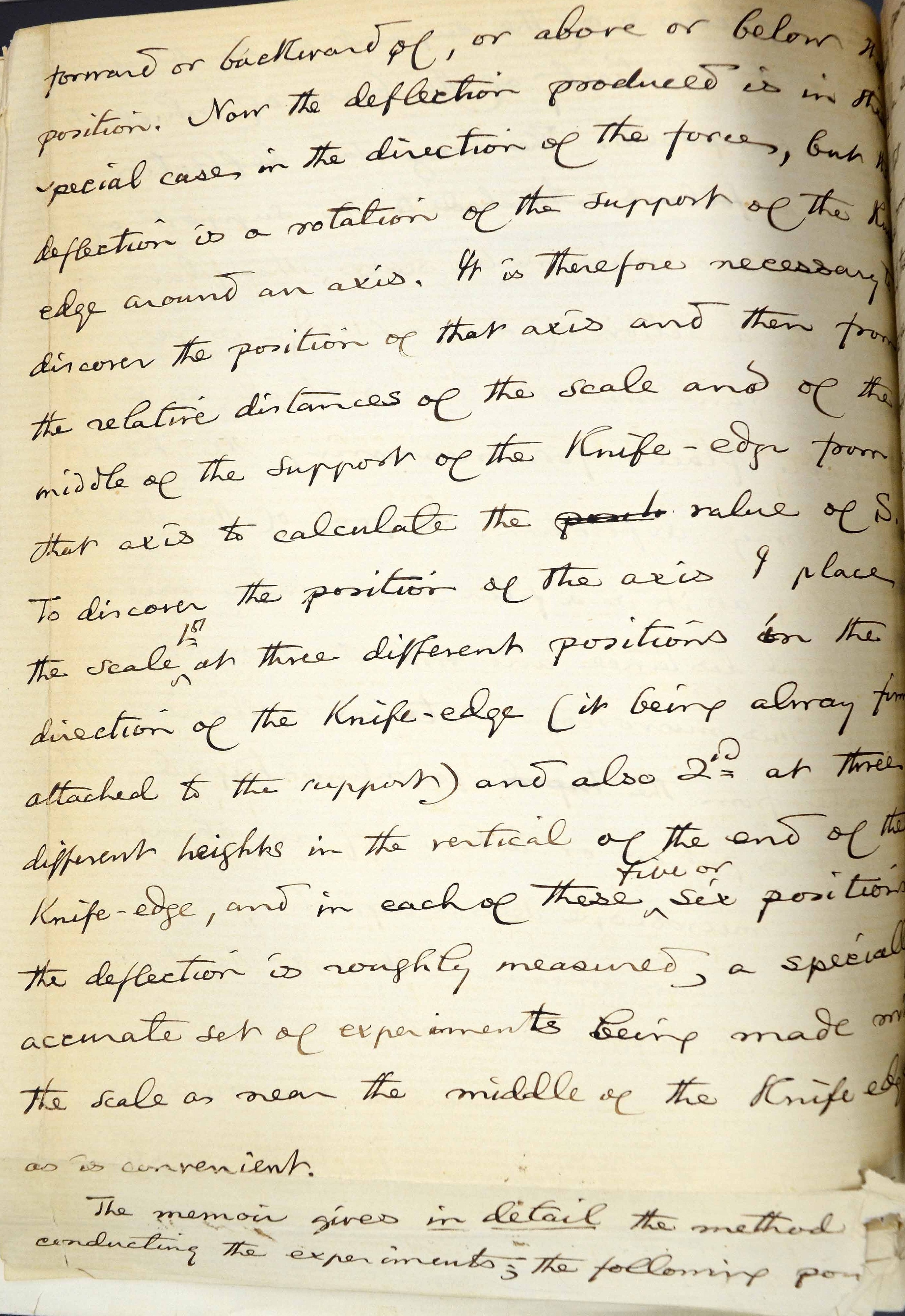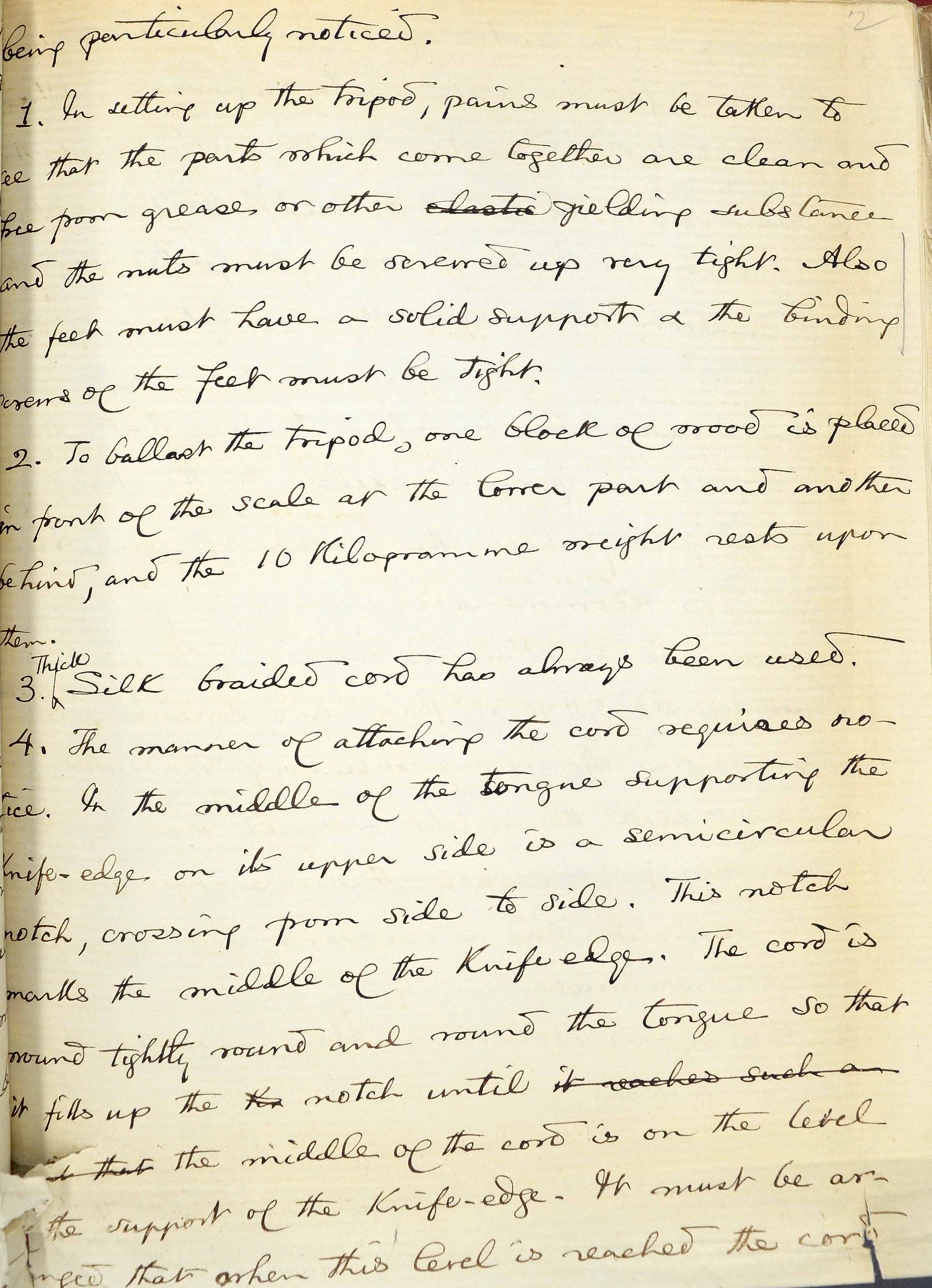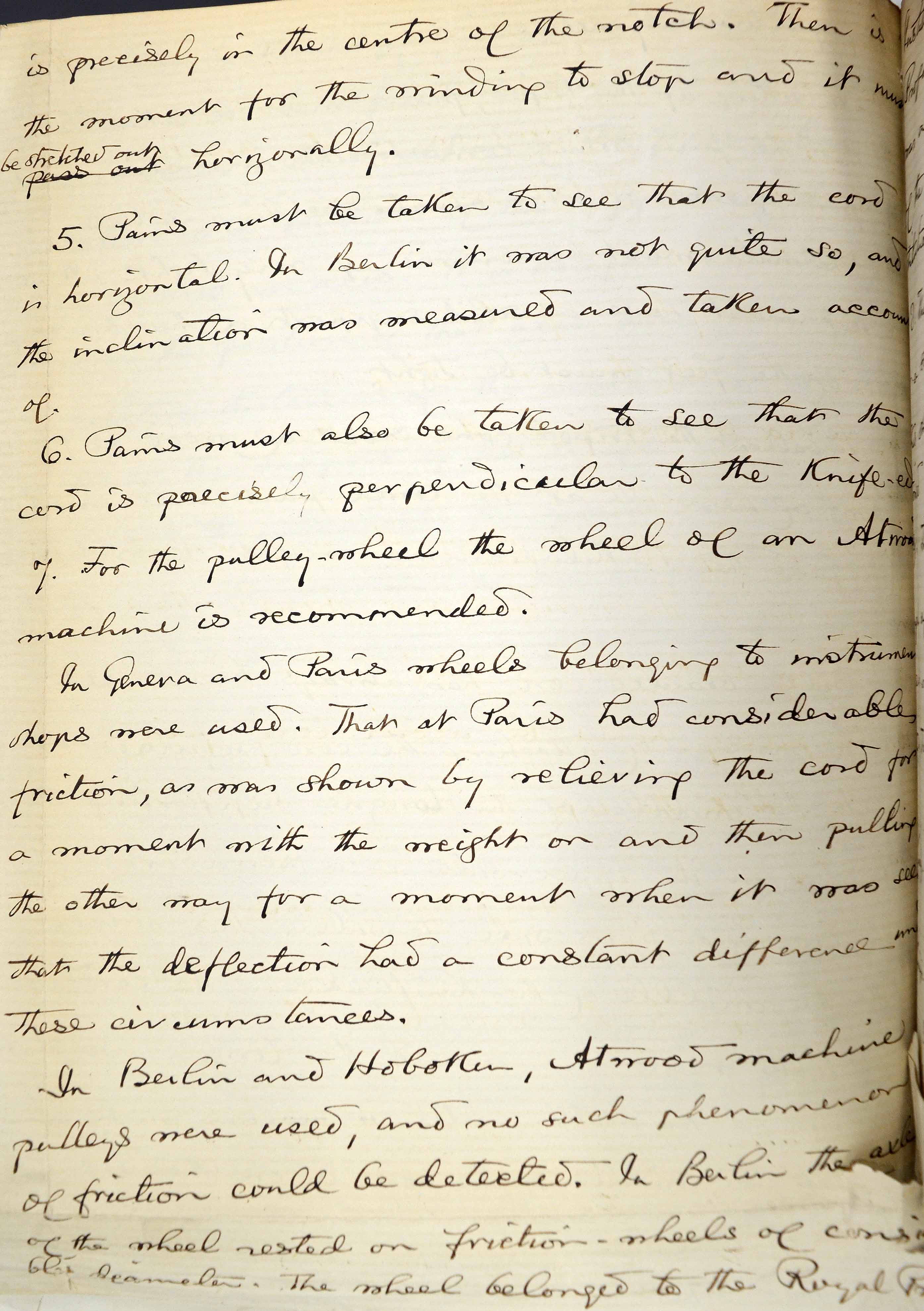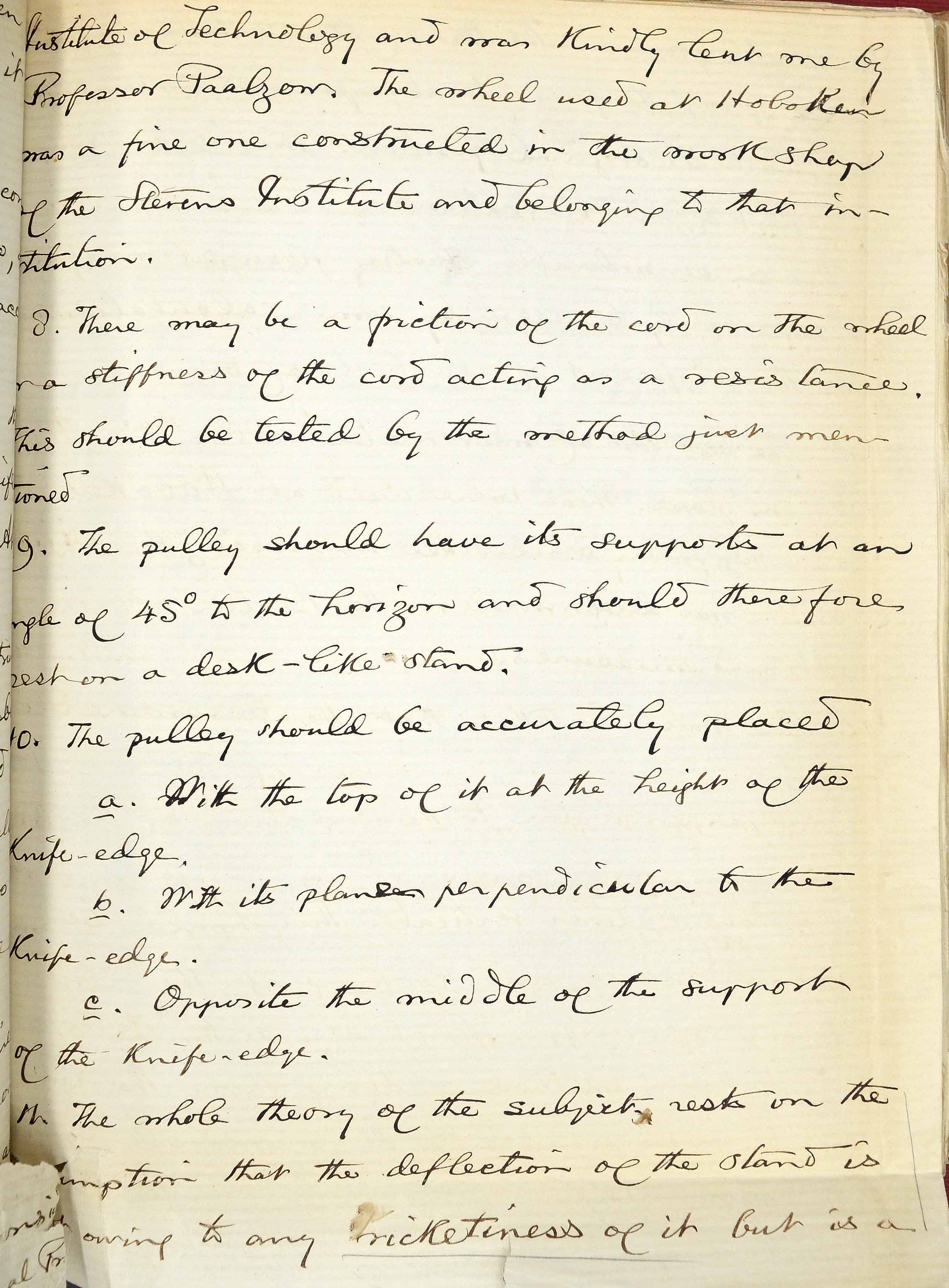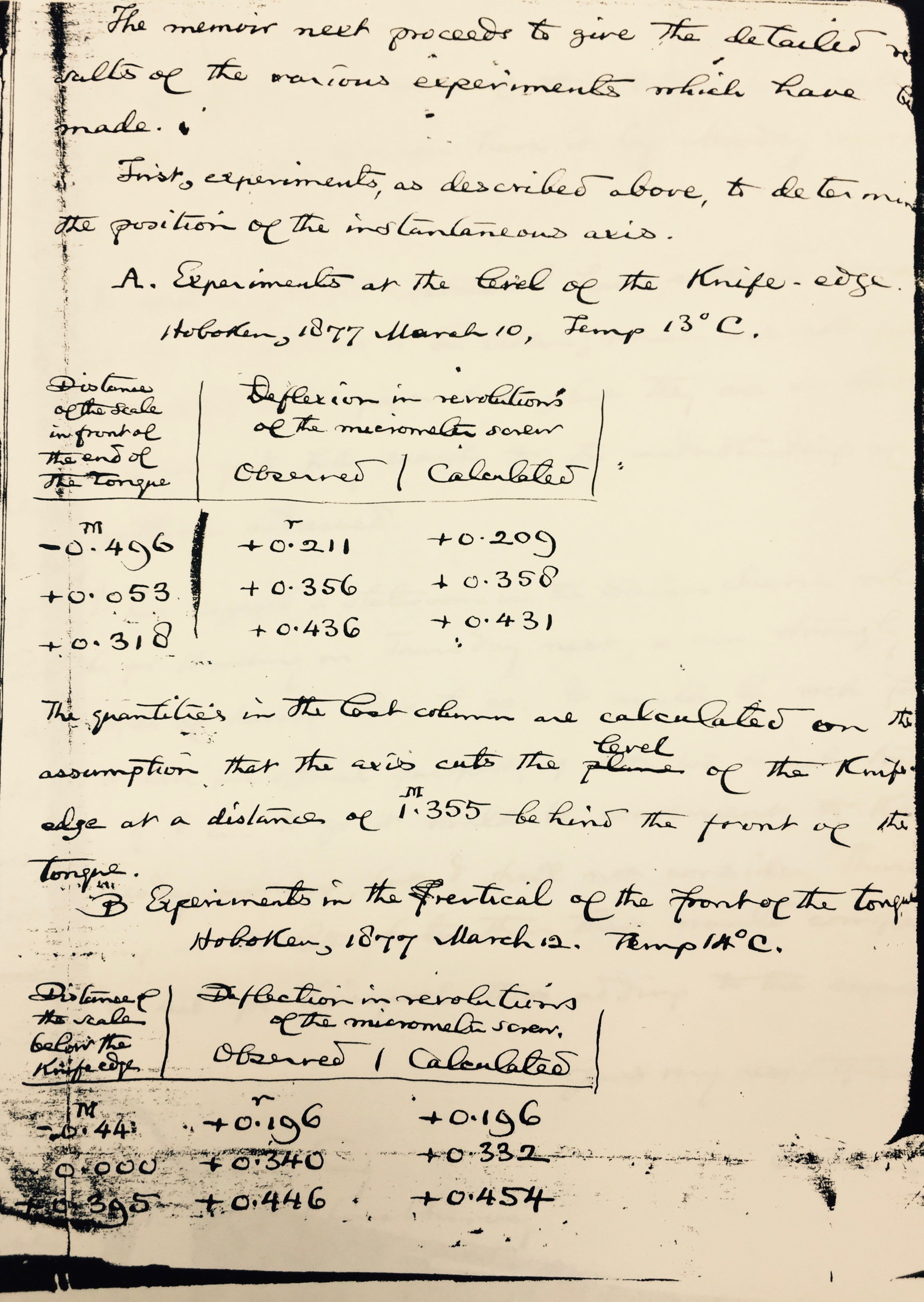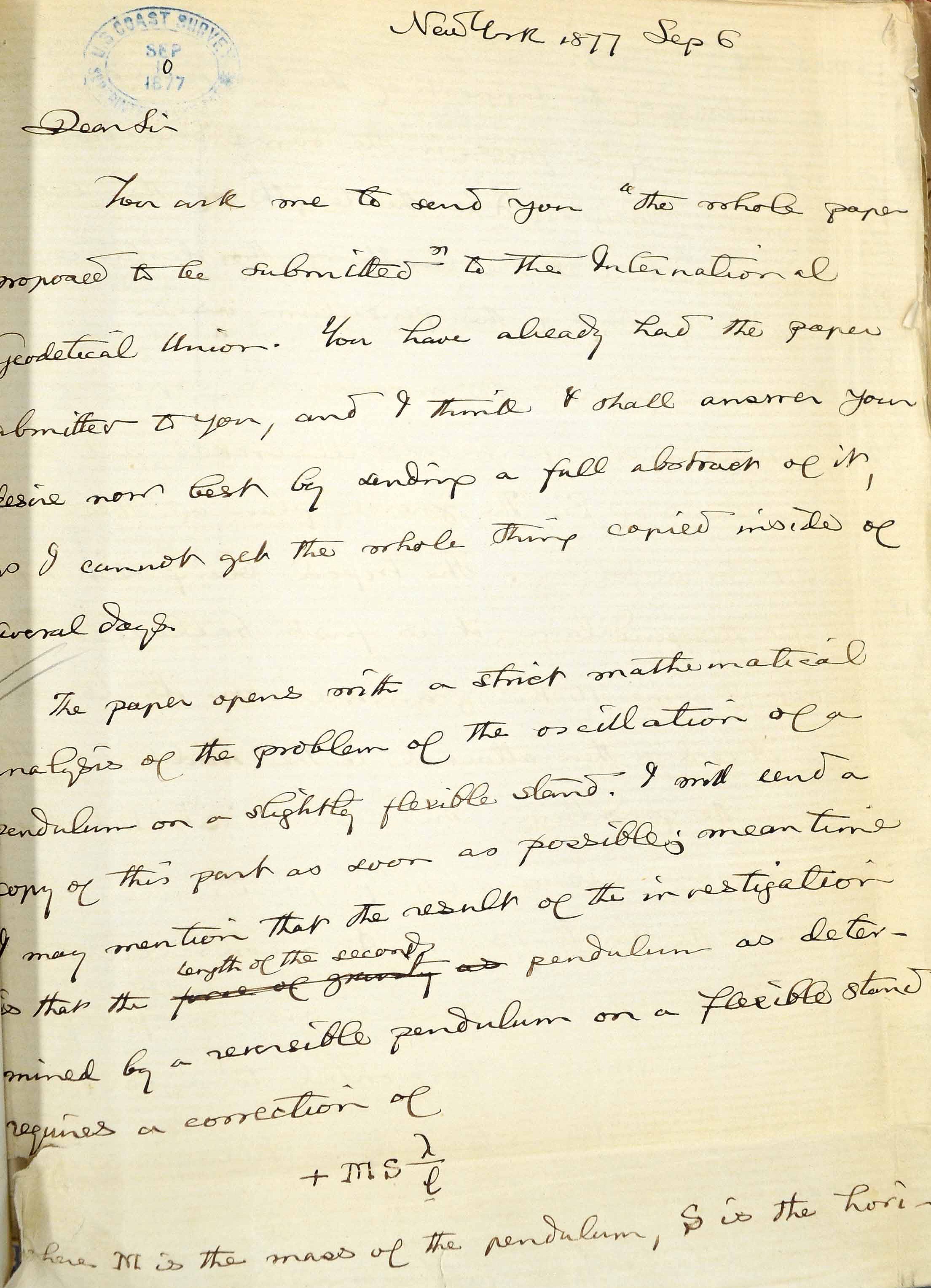
New York, 6 de septiembre de 1877
You ask me to send you "the whole paper proposed to be submitted" to the International Geodetical Union. You have already had the paper submitted to you, and I think I shall answer your desire now best by sending a full abstract of it, as I cannot get the whole thing copied inside of several days.
The paper opens with a strict mathematical analysis of the problem of the oscillation of a pendulum on a slightly flexible stand. I will send a copy of this part as soon as possible; meantime I may mention that the result of the investigation is that the length of the seconds pendulum as determined by a reversible pendulum on a flexible stand requires a correction of
where m is the mass of the pendulum, s is the hori-
